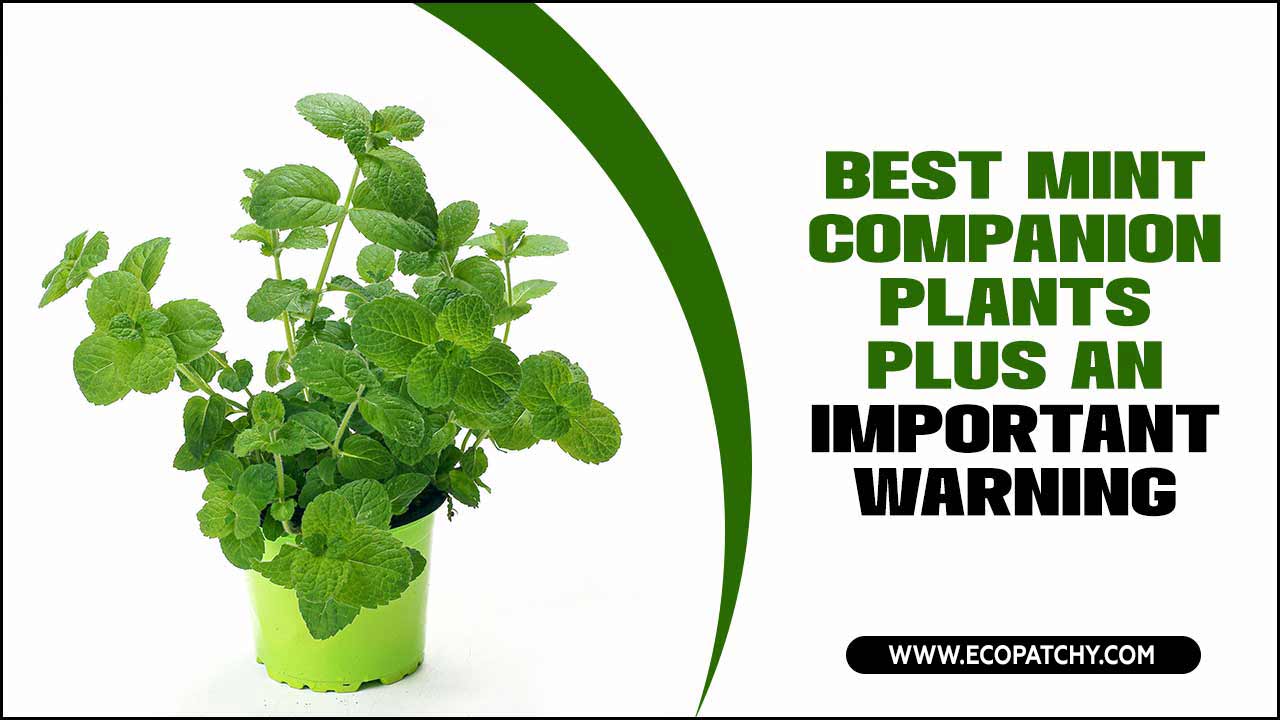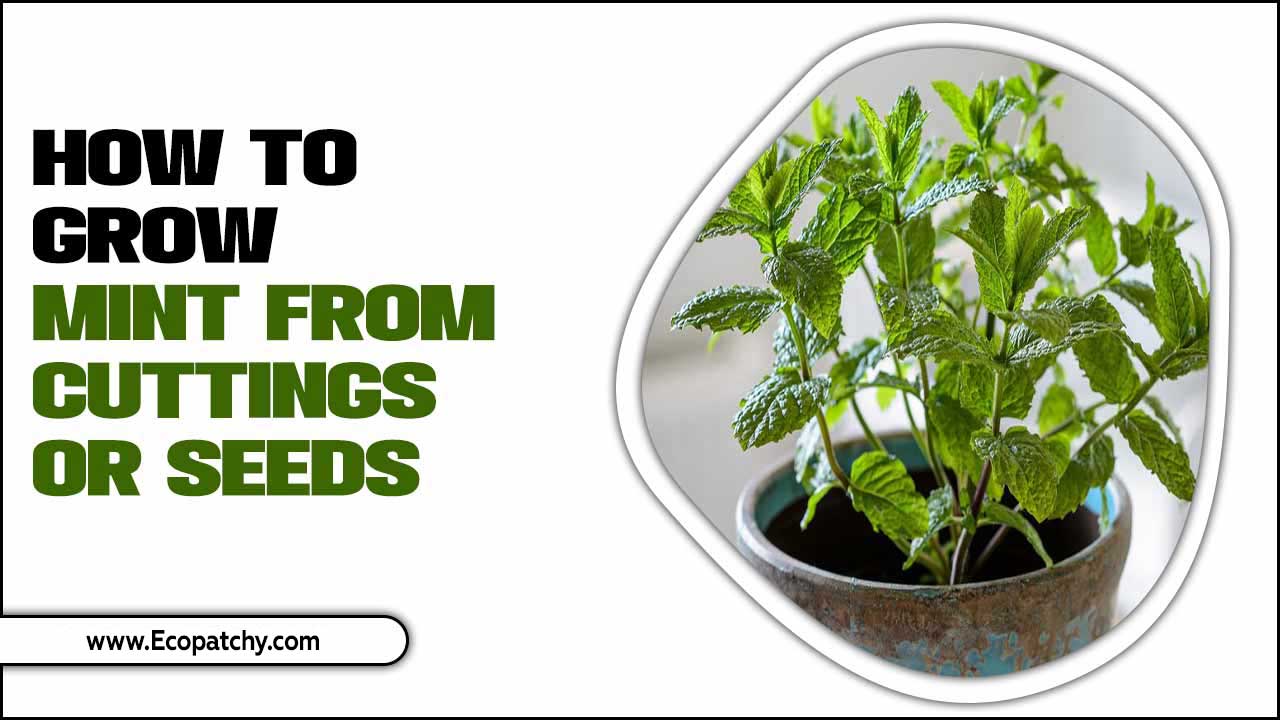Do you love mint’s fresh, invigorating taste in your drinks and meals? Or perhaps you want to add some greenery to your home garden or balcony. Growing popular mint varieties is a great place to start!
Mint has a rich history and is known for its medicinal properties, making it a versatile herb that can be used in various ways. Here, we will explore different types of mint plants and their unique flavors and aromas.
We will also provide tips on how to grow and use popular mint varieties successfully, from choosing the right location to harvesting and storing your mint. Whether you are new to gardening or an experienced green thumb, our step-by-step guide will help you grow healthy and flavorful mint plants that you can use in various recipes.
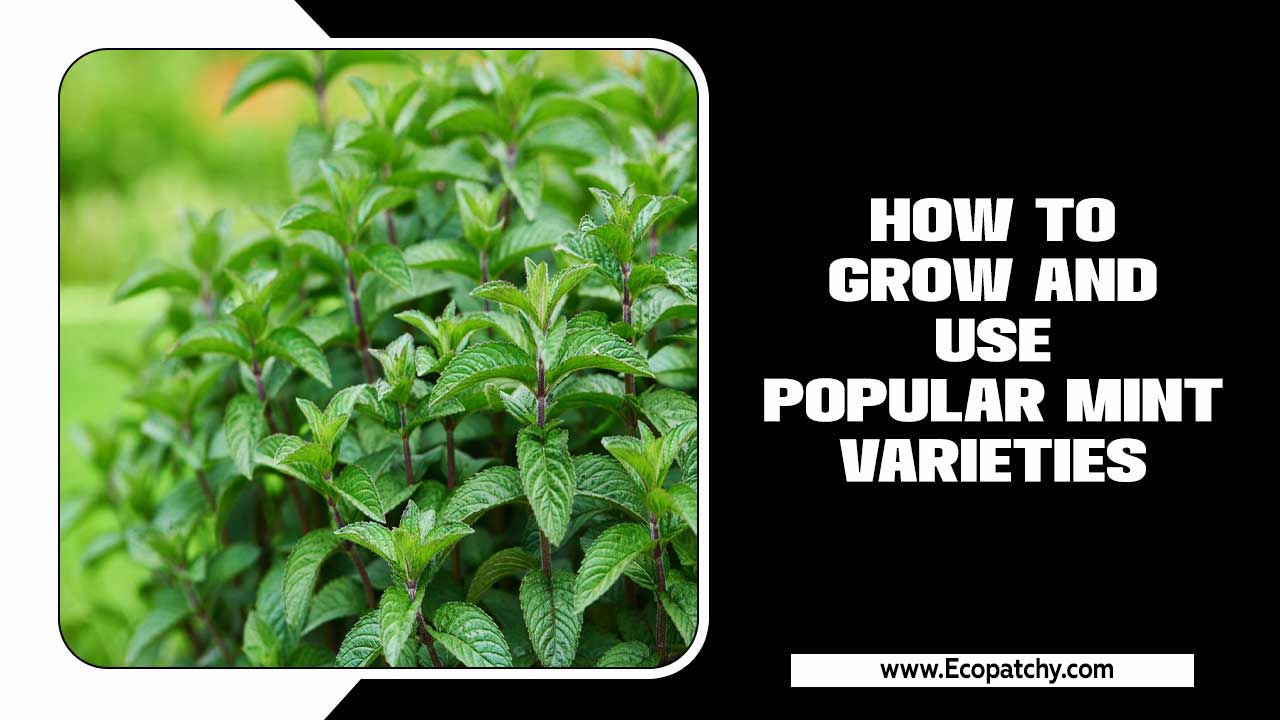
7 Tips For How To Grow And Use Popular Mint Varieties
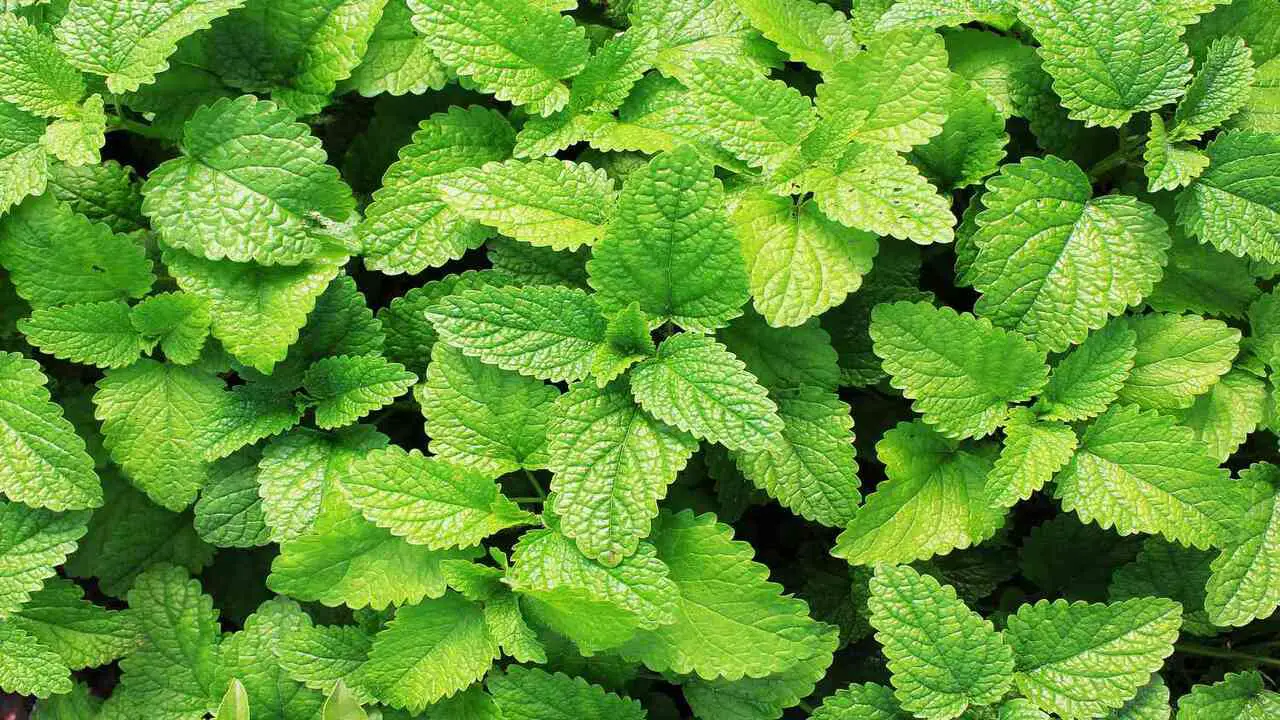
Growing and using popular mint varieties can add a refreshing touch to your culinary creations and home remedies. Whether you’re a seasoned gardener or just starting, here are seven tips to help you successfully how to grow and use popular mint varieties:
- Choose The Right Variety: Mint has many flavours, including peppermint, spearmint, and chocolate mint. Consider the flavour profile you desire and select the appropriate variety.
- Find the Perfect Spot: Mint thrives in moist soil and partial shade. Choose a location in your garden that provides these conditions for optimal growth.
- Opt For Containers: Because mint can spread rapidly, preventing it from taking over your garden is often best. Use deep pots with good drainage to ensure healthy growth.
- Water Regularly: Keep the soil consistently moist but not waterlogged. Mint plants have shallow roots, so regular watering is essential for their health.
- Prune Regularly: To encourage bushier growth and prevent the plant from becoming leggy, prune your mint regularly by pinching off the top leaves or stems.
- Harvest With Care: When harvesting mint leaves, pick them from the top of the plant to promote new growth. Avoid removing more than one-third of the plant at a time to maintain its health.
- Get Creative In The Kitchen: Mint can be used in various dishes, including salads, desserts, beverages, and savory dishes like lamb or pea soups. Experiment with different recipes to discover how mint can enhance your culinary creations.
By following these tips, you’ll be well on your way to growing and utilizing popular mint varieties like a pro.
The Rich History Of Mint
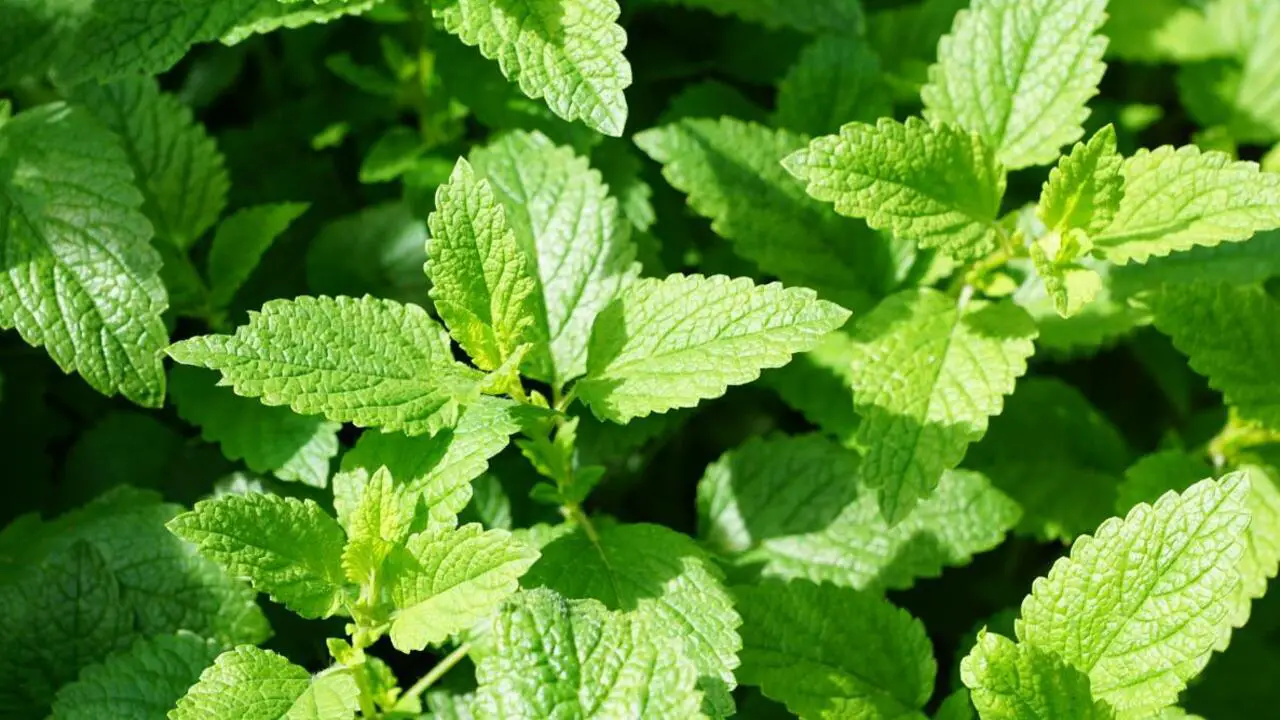
With its rich history dating back to ancient civilizations, the Mint holds a special place in our past. In those times, it was valued for its soothing properties and used extensively for medicinal purposes. Mint’s refreshing aroma and taste made it highly coveted in ancient cultures and even served as a currency in some societies.
Additionally, mint plays a significant role in traditional herbal medicine practices. This perennial herb from the Mentha family has truly stood the test of time, captivating us with its versatility and adding a delightful touch to our lives.
Types Of Mint To Grow: Exploring Varieties
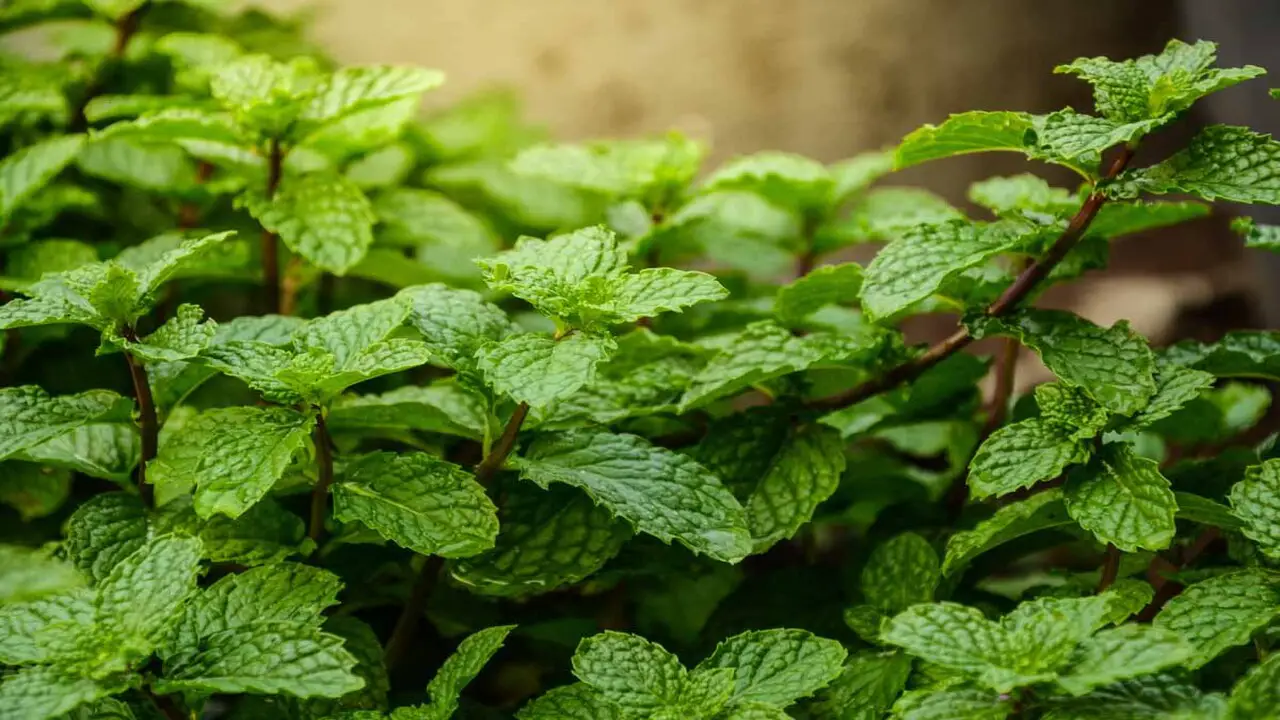
When growing mint, there are several popular varieties. Each variety has unique flavor and characteristics, making it perfect for different culinary uses. You can add flavour to your dishes by exploring different mint varieties and experimenting with new culinary creations. Happy growing! Here are some common types of mint that you can grow in your garden:
- Peppermint: Known for its strong, refreshing flavor, peppermint is often used in teas, desserts, and savory dishes.
- Spearmint: With a milder flavor than peppermint, spearmint is commonly used in cocktails, salads, and Middle Eastern cuisine.
- Chocolate Mint: As the name suggests, this variety has a delightful chocolatey aroma and taste. It can be used in baking, hot chocolate, or garnish.
- Pineapple Mint: This variety hints at tropical sweetness and adds a unique twist to drinks and fruit salads.
- Lemon Balm: Although not technically a mint, lemon balm belongs to the same family and has a lemony fragrance. It can be used in teas, desserts, or as a garnish.
From Spearmint To Pineapple Mint: A Closer Look
A Closer Look reveals the diverse flavours and fragrances within the Mint family. Mentha spicata, known as spearmint, stands out with its bright green leaves and refreshing taste. In contrast, peppermint boasts darker foliage and a stronger menthol flavor.
For those seeking a fruity twist, apple mint offers oval leaves and a crisp, fruity taste, while pineapple mint surprises with variegated foliage and a tropical pineapple fragrance. Lastly, chocolate mint tempts the taste buds with deep green leaves and a delicious chocolate-mint flavor. With such variety, there’s a mint for every palate.
Choosing The Right Location For Planting Mint
Choosing the right location for planting mint is crucial for its growth and success. Mint plants thrive in areas with partial shade, receiving about 4-6 hours of sunlight daily. It is important to avoid planting mint in direct sunlight as it can scorch the leaves and hinder growth.
Mint also prefers moist soil that drains well, so it is advisable to plant it in containers or raised beds to ensure proper drainage. Additionally, mint is known for its invasive nature, so it is best to plant it in pots or use barriers like underground edging to prevent it from spreading and taking over your garden. You can enjoy a bountiful harvest of fresh and flavorful mint leaves by selecting the right location and providing optimal growing conditions.
Ideal Soil Conditions For Mint Growth

Creating the ideal soil conditions is crucial for the successful growth of mint. Mint plants thrive in moist, well-draining soil with a slightly acidic to neutral pH level. It is important to ensure that the soil is rich in organic matter and has good fertility.
Adding compost or well-rotted manure to the soil before planting can help improve its structure and provide essential nutrients for healthy growth. Mint also prefers a sunny location, although it can tolerate partial shade. Proper soil preparation and maintenance will go a long way in ensuring that your mint plants flourish and provide you with an abundant harvest of fragrant leaves.
When Is The Best Time To Plant Mint?
The best time to plant mint is in the spring after the last frost has passed. Mint is a hardy herb that thrives in cooler temperatures and can tolerate a variety of soil conditions. It is important to choose a sunny location with well-draining soil for optimal growth.
Mint can also be grown from seeds or cuttings, making it a versatile plant for gardeners. Once planted, mint requires regular watering to keep the soil moist but not waterlogged. With proper care and maintenance, you can enjoy fresh mint leaves for culinary uses or to make refreshing herbal teas throughout the growing season.
How To Effectively Manage Mint Pests And Diseases
Managing pests and diseases is an essential part of growing popular mint varieties. Mint plants are susceptible to various pests, including aphids, spider mites, and whiteflies. To effectively manage these pests, regular monitoring is crucial. Inspect your plants regularly for any signs of infestation, such as discolored leaves or webbing. If you spot any pests, you can use organic pest control methods like neem oil or insecticidal soap.
Additionally, proper sanitation practices can help prevent the spread of diseases in your mint plants. Remove any infected or diseased plants immediately and avoid overwatering, as excess moisture can lead to fungal diseases. You can keep your mint plants healthy and thriving throughout the growing season by staying vigilant and taking proactive measures.
Common Mint Diseases And How To Prevent Them
Mint plants are susceptible to various diseases impacting their growth and overall health. One common disease is mint rust, characterized by orange pustules on the leaves. Downy mildew can also affect mint, causing yellowing and leaves wilting.
Another disease to watch out for is powdery mildew, which appears as a white powdery coating on the foliage. Additionally, root rot can occur in waterlogged soil or poorly drained areas. To prevent these diseases, providing good air circulation and avoiding overhead watering is essential.
Harvesting And Storing Your Mint: Tips And Techniques
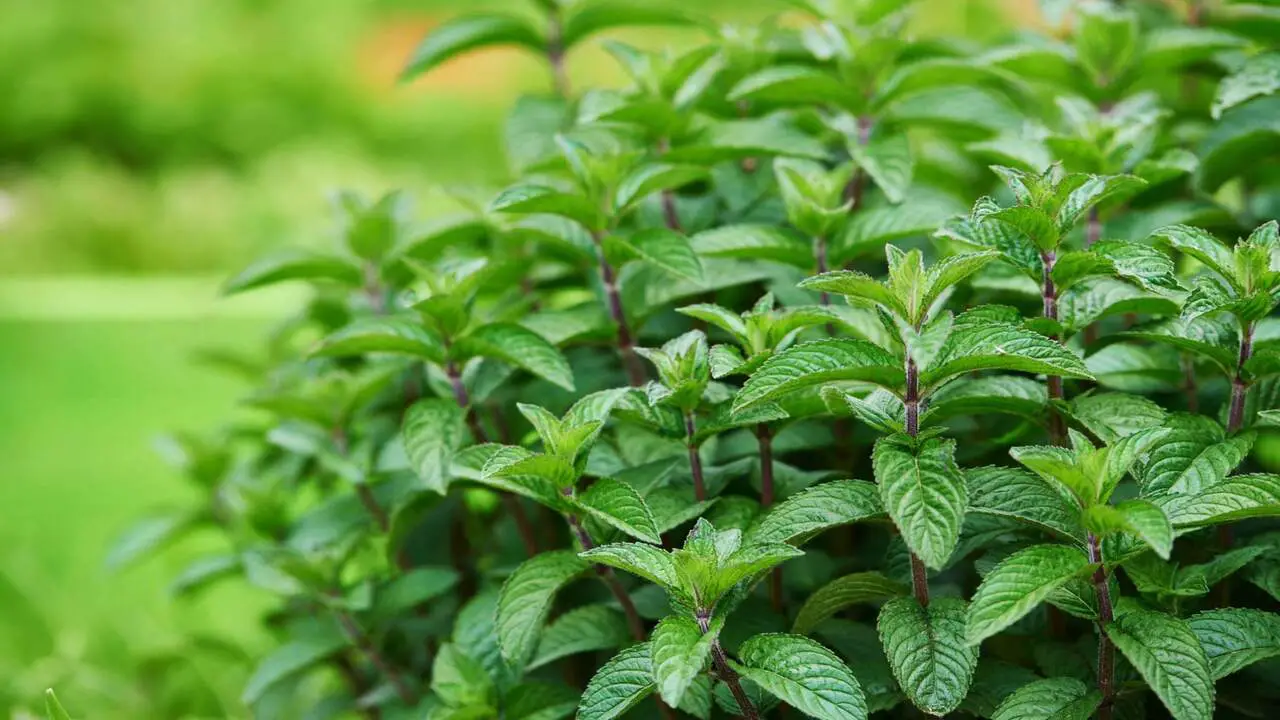
Harvesting and storing your mint is an important step in utilizing this popular herb to its fullest potential. Properly harvesting and storing your mint ensures this versatile herb remains flavorful and ready to enhance your culinary creations for months. Here are some tips and techniques to help you get the most out of your mint harvest:
- Begin by harvesting the mint leaves at their peak flavor, usually in the morning after the dew has dried. This is when the essential oils in the leaves are most concentrated.
- Use scissors or garden shears to snip off the leaves, leaving a few inches of stem intact.
- Avoid cutting over one-third of the plant at a time, as this can stress the mint and inhibit future growth.
- Remove dirt or debris after harvesting, and gently rinse the leaves under cool water.
- Once cleaned, you can use your mint immediately or store it later. To store fresh mint, wrap it loosely in a damp paper towel and place it in a plastic bag. Store it in the refrigerator for up to one week.
- Alternatively, you can dry your mint for longer-term storage. Hang small bunches of mint upside down in a cool, well-ventilated area until completely dry. Once dry, remove the leaves from the stems and store them in an airtight container away from direct light and heat.
Conclusion
Growing and using popular mint varieties can be a rewarding experience for any garden enthusiast or culinary enthusiast. With a rich history and a wide range of flavours and aromas, mint offers endless possibilities for both gardening and cooking. You can ensure a successful harvest by choosing the right location, providing ideal soil conditions, and effectively managing pests and diseases.
Remember to harvest your mint at the right time and store it properly to preserve its freshness and flavor. Whether you’re making refreshing drinks, flavorful sauces, or fragrant desserts, the versatility of mint is sure to enhance your culinary creations. So, start growing and using popular mint varieties and explore the wonderful world of this aromatic herb. We hope you understand how to grow and use popular mint varieties.
Frequently Asked Questions
1.What Is The Most Popular Mint Variety?
Ans: Spearmint is The most popular mint, widely used in culinary applications like teas and desserts. Other popular varieties include peppermint, chocolate mint, and pineapple mint. Mint plants are easy to grow and have medicinal uses as well.
2.What Are The Different Types Of Mint?
Ans: Mint comes in various flavors and aromas, making it a versatile herb. Popular varieties include peppermint, spearmint, chocolate mint, and apple mint. There are also lesser-known types like pineapple mint, orange mint, and lemon balm. Each type can be used for culinary or medicinal purposes.
3.Can You Plant Different Varieties Of Mint Together?
Ans: Yes, it is possible to plant different varieties of mint together. However, remember that mint is a fast-growing plant that can spread and take over an area easily. To prevent overcrowding, planting different varieties in separate containers or providing enough space for each plant to grow when planting them together is best.
4.Which Mint Is The Best?
Ans: Personal preference and intended use play a significant role when choosing the best mint variety. Peppermint is favored for its strong, refreshing flavor, while spearmint offers a milder and sweeter taste, often used in teas and desserts. Other popular options include chocolate mint, apple mint, and pineapple mint.
5.What Is The Best Fertilizer For Mint?
Ans: To ensure optimal growth, mint benefits from soil rich in organic matter. However, excessive leaf growth can occur with too much nitrogen. A balanced fertilizer with equal nitrogen, phosphorus, and potassium is recommended. Alternatively, organic options like compost or worm castings can be beneficial. Avoid high-nitrogen fertilizers that could damage the plant.

